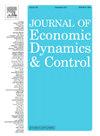医疗补助工作要求,劳动力市场影响和福利
IF 2.3
3区 经济学
Q2 ECONOMICS
引用次数: 0
摘要
我们开发了一个包含劳动力供给、健康风险和健康保险选择的重叠代模型,以评估对医疗补助资格施加工作要求的影响。该模型是根据美国的数据进行校准的,并用于模拟反事实的政策,这些政策将医疗补助计划以每周最低工作时间为条件,病人和残疾人除外。我们的部分均衡和一般均衡分析表明,这些要求增加了劳动力参与率,减少了医疗补助登记,提高了未参保率,并促进了产出。虽然长期增长可以抵消短期福利损失,但大多数情况下会导致低收入家庭的净福利下降。相比之下,高收入家庭的福利则有所增加。当工作要求扩大到包括病人和残疾人时,该政策产生更强的增长效应和更大的福利收益。纳入《平价医疗法案》的关键特征——比如扩大医疗补助和补贴私人保险交易所——创造了一个风险较低的环境,在这个环境中,低收入个人可以用补贴的私人保险代替医疗补助,从而减少福利损失。然而,保险补贴的财政负担抵消了政府从医疗补助计划收缩中节省的部分资金,导致总体增长效果更为温和。本文章由计算机程序翻译,如有差异,请以英文原文为准。
Medicaid work requirements, labor market effects and welfare
We develop an overlapping generations model with labor supply, health risk, and health insurance choice to evaluate the effects of imposing work requirements for Medicaid eligibility. The model is calibrated to U.S. data and used to simulate counterfactual policies that condition Medicaid access on minimum weekly work hours, with exemptions for the sick and disabled. Our partial and general equilibrium analyses show that such requirements increase labor force participation, reduce Medicaid enrollment, raise the uninsured rate, and boost output. While long-run growth can offset short-run welfare losses, most scenarios lead to net welfare declines for low-income households. High-income households, by contrast, experience welfare gains. When work requirements are extended to include the sick and disabled, the policy yields stronger growth effects and larger welfare gains. Incorporating key features of the Affordable Care Act—such as Medicaid expansion and subsidized private insurance exchanges—creates a less risky environment in which low-income individuals can substitute Medicaid with subsidized private coverage, thereby reducing welfare losses. However, the fiscal burden of insurance subsidies offsets some of the government's savings from Medicaid contraction, resulting in more modest overall growth effects.
求助全文
通过发布文献求助,成功后即可免费获取论文全文。
去求助
来源期刊

Journal of Economic Dynamics & Control
ECONOMICS-
CiteScore
3.10
自引率
10.50%
发文量
199
期刊介绍:
The journal provides an outlet for publication of research concerning all theoretical and empirical aspects of economic dynamics and control as well as the development and use of computational methods in economics and finance. Contributions regarding computational methods may include, but are not restricted to, artificial intelligence, databases, decision support systems, genetic algorithms, modelling languages, neural networks, numerical algorithms for optimization, control and equilibria, parallel computing and qualitative reasoning.
 求助内容:
求助内容: 应助结果提醒方式:
应助结果提醒方式:


